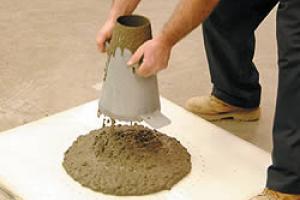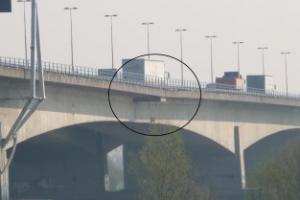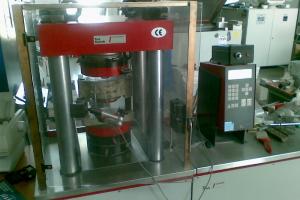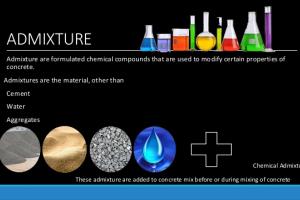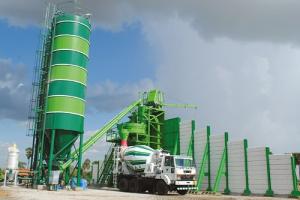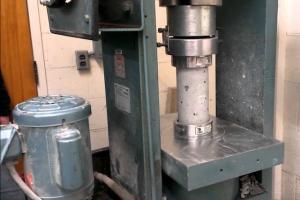Tests Applied on Concrete for Strength and Workability

Tests for Concrete Strength:
-
Compressive Strength Test: This is the most common test to determine the strength of concrete. Cylindrical or cube-shaped specimens are prepared and subjected to a compressive load until failure. The maximum load applied divided by the cross-sectional area gives the compressive strength of concrete.
-
Flexural Strength Test: This test measures the ability of concrete to resist bending or flexural stresses. Beam specimens are loaded in a manner that induces bending, and the maximum load sustained before failure is recorded. Flexural strength is calculated using the dimensions of the specimen.
-
Splitting Tensile Strength Test: This test measures the tensile strength of concrete. Cylindrical specimens are loaded diametrically until they split. The maximum tensile stress developed at the point of failure is used to calculate the splitting tensile strength.
-
Bond Strength Test: This test assesses the bond strength between concrete and reinforcing steel bars or other materials. Different methods, such as pull-out tests or bond wrench tests, are used to evaluate the bond strength at the interface.
Tests for Concrete Workability:
-
Slump Test: This is a widely used test to assess the consistency and workability of fresh concrete. A slump cone is filled with concrete, and after removing the cone, the settlement of the concrete is measured. The slump value indicates the workability of concrete.
-
Flow Table Test: This test is performed to determine the flow properties of self-compacting concrete (SCC) or highly fluid concrete. The concrete is placed on a flow table, and the table is raised and dropped multiple times. The flow spread diameter is measured to evaluate the workability.
-
Vebe Consistency Test: Primarily used for assessing the workability of concrete mixes with very low water-cement ratios, this test measures the time required for a vibrating table to achieve specified amplitude and frequency. The higher the time, the lower the workability.
-
Compaction Factor Test: This test determines the workability of concrete by measuring the ratio of the weight of partially compacted concrete to the weight of fully compacted concrete. It provides an indication of the ease with which concrete can be compacted.
-
Kelly Ball Test: Suitable for measuring the workability of concrete with a low to medium slump, this test involves measuring the depth of penetration of a metal hemisphere into freshly mixed concrete under its own weight.
SAMPLING The first step is to take a test sample from the large batch of concrete. This should be done as soon as discharge of the concrete commences. The sample should be representative of the concrete supplied. The sample is taken in one of two ways: For purposes of accepting or rejecting the load: Sampling after 0.2 m3 of the load has been poured. For routine quality checks: Sampling from three places in the load.
a) Concrete Slump Test
This test is performed to check the consistency of freshly made concrete. The slump test is done to make sure a concrete mix is workable. The measured slump must be within a set range, or tolerance, from the target slump.
Workability of concrete is mainly affected by consistency i.e. wetter mixes will be more workable than drier mixes, but concrete of the same consistency may vary in workability. It can also be defined as the relative plasticity of freshly mixed concrete as indicative of its workability.
Tools and apparatus used for slump test (equipment):
-
Standard slump cone (100 mm top diameter x 200 mm bottom diameter x 300 mm high)
-
Small scoop
-
Bullet-nosed rod (600 mm long x 16 mm diameter)
-
Rule
-
Slump plate (500 mm x 500 mm)
Procedure of slump test for concrete:
-
Clean the cone. Dampen with water and place on the slump plate. The slump plate should be clean, firm, level, and non-absorbent. Collect a sample of concrete to perform the slum test.
-
Stand firmly on the footpieces and fill 1/3 the volume of the cone with the sample. Compact the concrete by 'rodding' 25 times. Rodding means to push a steel rod in and out of the concrete to compact it into the cylinder, or slump cone. Always rod in a definite pattern, working from outside into the middle.
-
Now fill to 2/3 and again rod 25 times, just into the top of the first layer.
-
Fill to overflowing, rodding again this time just into the top of the second layer. Top up the cone till it overflows.
-
Level off the surface with the steel rod using a rolling action. Clean any concrete from around the base and top of the cone, push down on the handles, and step off the foot pieces.
-
Carefully lift the cone straight up making sure not to move the sample.
-
Turn the cone upside down and place the rod across the up-turned cone.
-
Take several measurements and report the average distance to the top of the sample.If the sample fails by being outside the tolerance (ie the slump is too high or too low), another must be taken. If this also fails the remainder of the batch should be rejected.
b) Concrete Compression Test
The compression test shows the compressive strength of hardened concrete. The compression test shows the best possible strength concrete can reach in perfect conditions. The compression test measures concrete strength in the hardened state. Testing should always be done carefully. Wrong test results can be costly. The testing is done in a laboratory off-site. The only work done on-site is to make a concrete cylinder for the compression test. The strength is measured in Megapascals (MPa) and is commonly specified as a characteristic strength of concrete measured 28 days after mixing. The compressive strength of concrete is a measure of the concrete’s ability to resist loads that tend to crush it.
Apparatus for compression test
Cylinders (100 mm diameter x 200 mm high or 150 mm diameter x 300 mm high) (The small cylinders are normally used for most testing due to their lighter weight)
- Small scoop
- Bullet-nosed rod (600 mm x 16 mm)
- Steel float
- Steel plate
How to do a Compression Test?
Procedure for compression test of concrete
-
Clean the cylinder mold and coat the inside lightly with form oil, then place it on a clean, level, and firm surface, ie the steel plate. Collect a sample.
-
Fill 1/2 the volume of the mould with concrete then compact by rodding 25 times. Cylinders may also be compacted by vibrating using a vibrating table.
-
Fill the cone to overflowing and rod 25 times into the top of the first layer, then top up the mold till overflowing.
-
Level off the top with the steel float and clean any concrete from around the mould.
-
Cap, clearly tag the cylinder and put it in a cool dry place to set for at least 24 hours.
-
After the mould is removed the cylinder is sent to the laboratory where it is cured and crushed to test compressive strength



